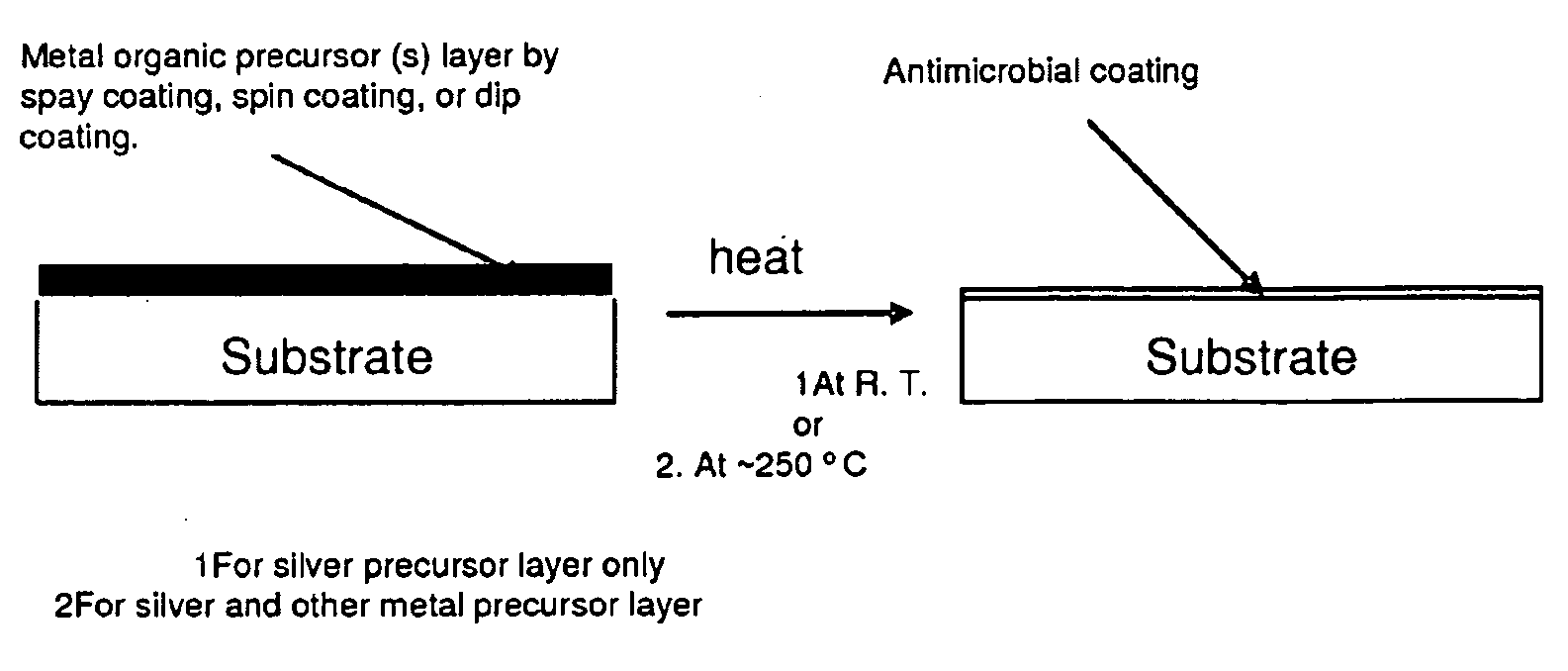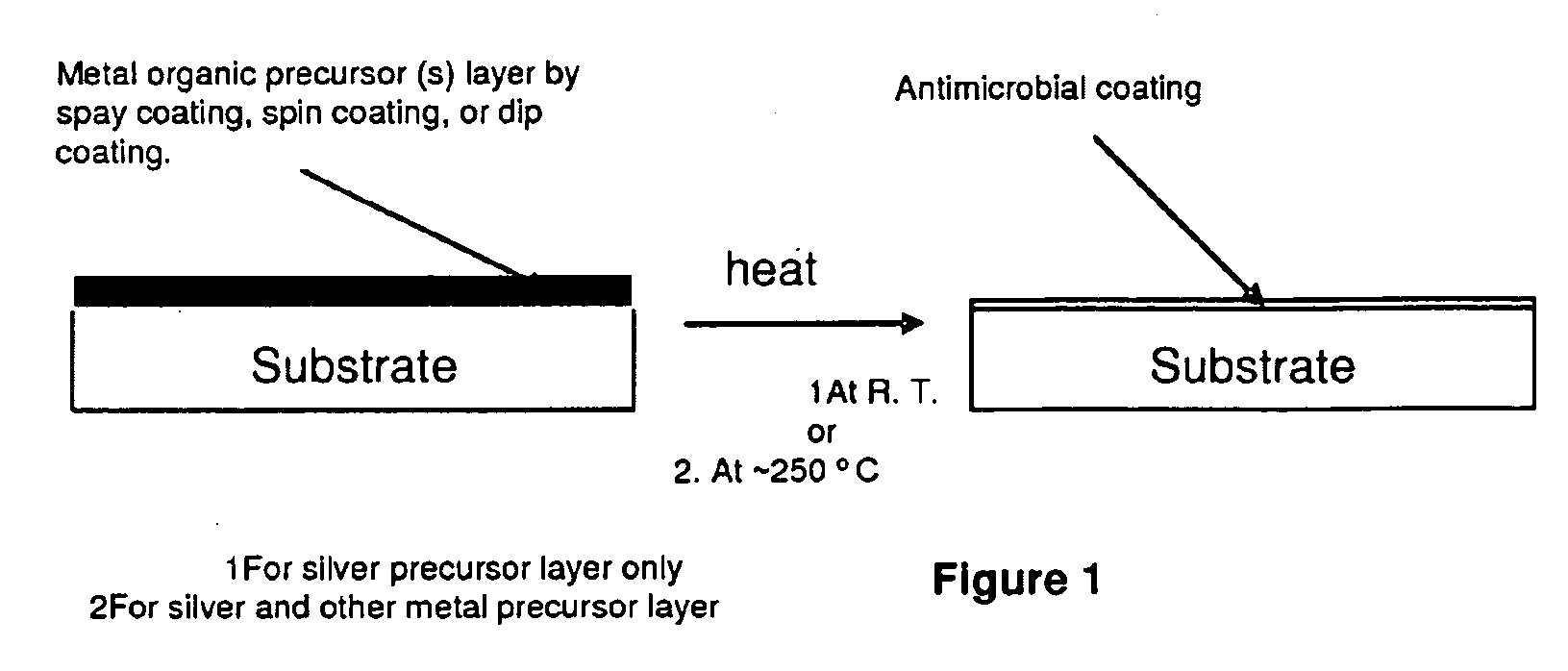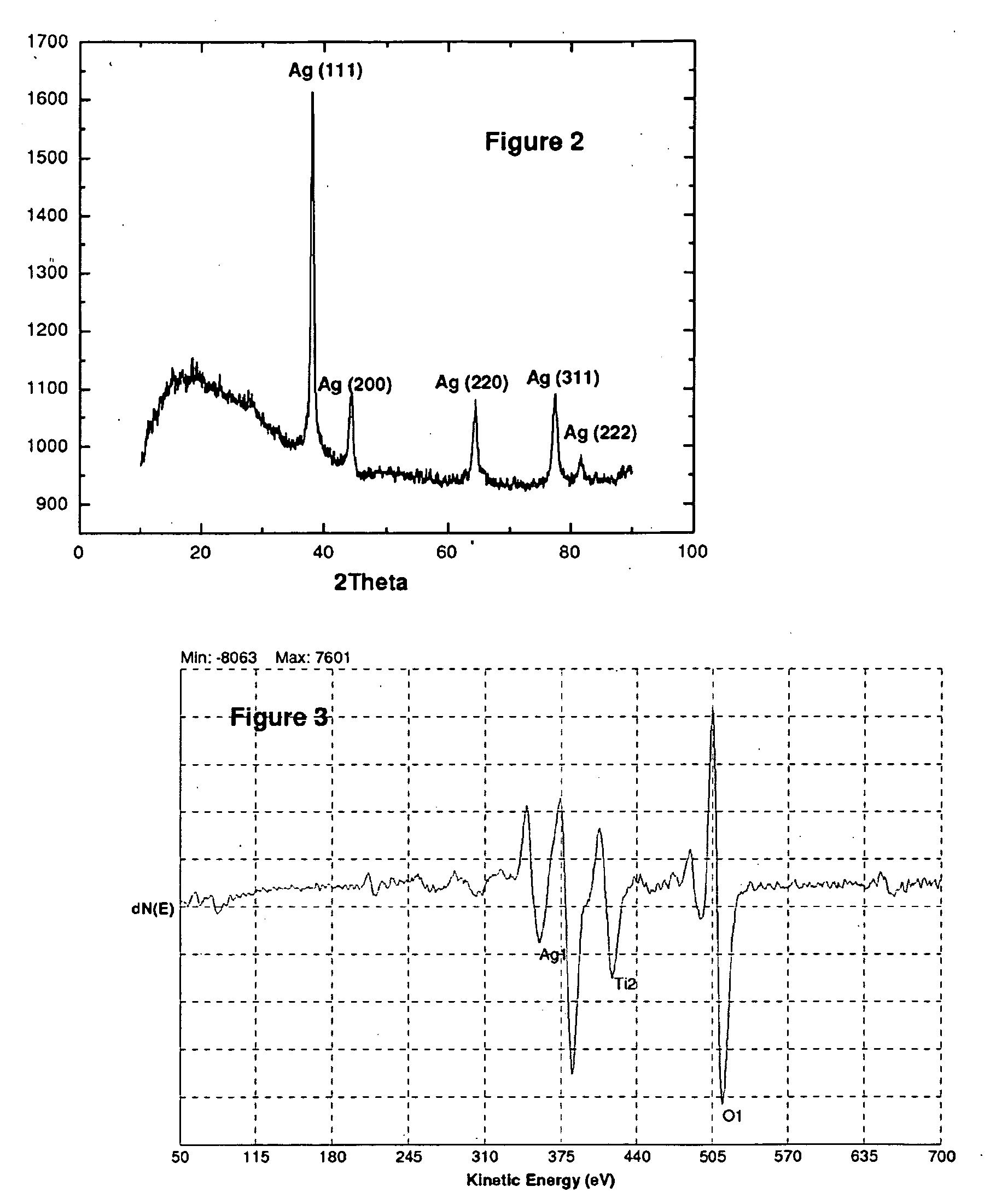Antimicrobial material compositions enriched with different active oxygen species
- Summary
- Abstract
- Description
- Claims
- Application Information
AI Technical Summary
Benefits of technology
Problems solved by technology
Method used
Image
Examples
example 1
[0072]Antimicrobial coatings comprising of silver and active oxygen species were prepared on different substrates according the procedure described in Para 44. A solution containing 10% wt (1,1,1-trifluoroacetylacetonato)silver(I) in ethanol and 1-butanol (4:1 ratio in volume) was prepared. The precursor layer was coated on two glass substrates (A1, A2) and one silicon (100) substrate-(S1). The samples, A1 and S1, were heated at 50 degree Celsius for 2 minutes. The other sample (A2) was heated at 250 degree Celsius for 1 minutes. Two blank glass slides were used as control for antimicrobial test. The culture used in test was Escherichia coli. The antimicrobial test was conducted according to the procedure described in Para 48. The result is listed in the following table.
Ct (CFU / ml)Log reduction DAg / O coating, A109Ag / O coating, A209Ag / O coating, S109Control 1(1.1 ± 0.4)E9—Control 2(1.3 ± 0.3)E9—
From the test result, the samples with the inventive coating showed strong bactericidal ef...
example 2
[0073]The antimicrobial coatings comprising of silver, titanium, and oxygen species were prepared according the procedure described in Para 45. A solution was prepared by dissolving (1,1,1-trifluoroacetylacetonato)silver(I) 0.0289 g and Bis(1,1,1-trifluoroacetylacetonato) di(iso-propoxo)titanium(IV) 0.1450 g in an ethanol and 1-butanol mixture solvent 1.5425 g. This solution was used as a stock solution. Metal precursors layer were prepared on two glass slides (labeled as F1 and F2) and two silicon (100) chips (labeled as S0 and S1). The coated samples were heated at 250 degree Celsius for 3 minutes on a hot plate. All the converted samples cooled to room temperature and kept in Petri dishes before test.
The antimicrobial test of the coating samples and controls (two blank cover slides, labeled as C1 and C2) was conducted according to the procedure described above in Para 48 with Escherichia Coli culture. The test result is listed in the following table. (where x is great than 2)
Ct (...
example 3
[0075]The antimicrobial coatings on glass substrate were prepared from the solutions containing silver and titanium precursor, in which the ratio between silver precursor and titanium precursor were 0.5%, 1%, 5%, 10%, 20%, and 30% in weight. Six different coatings were prepared on six glass slides according to the described procedure in Para 45. One blank glass slide was used as the control. Antibacterial test on these slides with Escherichia coli were conducted according the same procedure as described in Para 41. The test result is listed in the following table.
Ct (CFU / ml)DAg / TiO2 Coating (0.5% wt)09Ag / TiO2 Coating (1.0% wt)09Ag / TiO2 Coating (5.0% wt)09Ag / TiO2 Coating (10.0% wt)09Ag / TiO2 Coating (20.0% wt)09Ag / TiO2 Coating (30.0% wt)09Control glass slide, C1(2.7 ± 0.5)E9—
The test results indicated that the coating with different silver loading showed same strong antibacterial effect against Escherichia coli. The least loading of silver in the coating of the invention has not been ...
PUM
 Login to View More
Login to View More Abstract
Description
Claims
Application Information
 Login to View More
Login to View More - R&D
- Intellectual Property
- Life Sciences
- Materials
- Tech Scout
- Unparalleled Data Quality
- Higher Quality Content
- 60% Fewer Hallucinations
Browse by: Latest US Patents, China's latest patents, Technical Efficacy Thesaurus, Application Domain, Technology Topic, Popular Technical Reports.
© 2025 PatSnap. All rights reserved.Legal|Privacy policy|Modern Slavery Act Transparency Statement|Sitemap|About US| Contact US: help@patsnap.com



